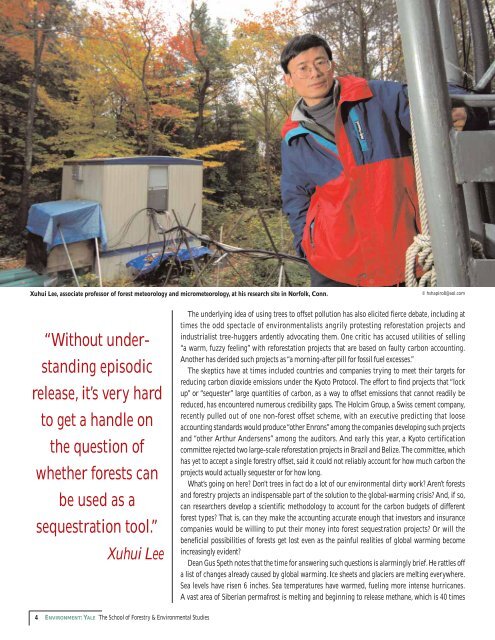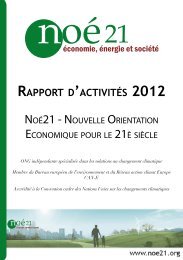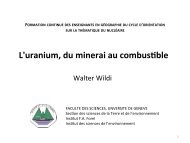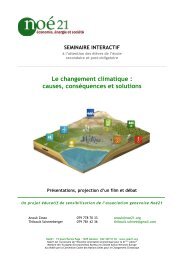As a Remedy to Global Warming, As a Remedy to Global Warming
As a Remedy to Global Warming, As a Remedy to Global Warming
As a Remedy to Global Warming, As a Remedy to Global Warming
Create successful ePaper yourself
Turn your PDF publications into a flip-book with our unique Google optimized e-Paper software.
Xuhui Lee, associate professor of forest meteorology and micrometeorology, at his research site in Norfolk, Conn.© hshapiro8@aol.com“Without understandingepisodicrelease, it’s very hard<strong>to</strong> get a handle onthe question ofwhether forests canbe used as asequestration <strong>to</strong>ol.”Xuhui LeeThe underlying idea of using trees <strong>to</strong> offset pollution has also elicited fierce debate, including attimes the odd spectacle of environmentalists angrily protesting reforestation projects andindustrialist tree-huggers ardently advocating them. One critic has accused utilities of selling“a warm, fuzzy feeling” with reforestation projects that are based on faulty carbon accounting.Another has derided such projects as “a morning-after pill for fossil fuel excesses.”The skeptics have at times included countries and companies trying <strong>to</strong> meet their targets forreducing carbon dioxide emissions under the Kyo<strong>to</strong> Pro<strong>to</strong>col. The effort <strong>to</strong> find projects that “lockup” or “sequester” large quantities of carbon, as a way <strong>to</strong> offset emissions that cannot readily bereduced, has encountered numerous credibility gaps. The Holcim Group, a Swiss cement company,recently pulled out of one non-forest offset scheme, with an executive predicting that looseaccounting standards would produce “other Enrons”among the companies developing such projectsand “other Arthur Andersens” among the audi<strong>to</strong>rs. And early this year, a Kyo<strong>to</strong> certificationcommittee rejected two large-scale reforestation projects in Brazil and Belize. The committee, whichhas yet <strong>to</strong> accept a single forestry offset, said it could not reliably account for how much carbon theprojects would actually sequester or for how long.What’s going on here? Don’t trees in fact do a lot of our environmental dirty work? Aren’t forestsand forestry projects an indispensable part of the solution <strong>to</strong> the global-warming crisis? And, if so,can researchers develop a scientific methodology <strong>to</strong> account for the carbon budgets of differentforest types? That is, can they make the accounting accurate enough that inves<strong>to</strong>rs and insurancecompanies would be willing <strong>to</strong> put their money in<strong>to</strong> forest sequestration projects? Or will thebeneficial possibilities of forests get lost even as the painful realities of global warming becomeincreasingly evident?Dean Gus Speth notes that the time for answering such questions is alarmingly brief. He rattles offa list of changes already caused by global warming. Ice sheets and glaciers are melting everywhere.Sea levels have risen 6 inches. Sea temperatures have warmed, fueling more intense hurricanes.A vast area of Siberian permafrost is melting and beginning <strong>to</strong> release methane, which is 40 times4ENVIRONMENT:YALE The School of Forestry & Environmental Studies








